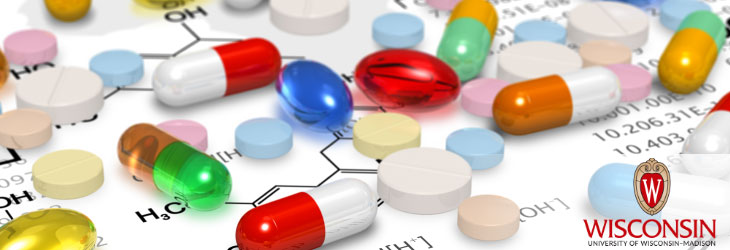Therapeutics & Vaccines

2-Methylene-18,19-Dinor-1Alpha-Hydroxy-Homopregnacalciferol
WARF: P05147US
Inventors: Hector DeLuca, Lori Plum, Rafal Barycki, Margaret Clagett-Dame
The Wisconsin Alumni Research Foundation (WARF) is seeking commercial partners interested in developing a new vitamin D analog.
Overview
Vitamin D is a highly potent regulator of calcium homeostasis and plays an established role in cellular differentiation. A recently discovered class of vitamin D analogs, the 19-nor-vitamin D compounds, shows a selective activity profile with high potency in inducing cellular differentiation and very low calcium mobilizing activity. These features make the 19-nor compounds potentially useful as therapeutic agents for a number of disorders.
The Invention
UW-Madison researchers have developed a new vitamin D analog, 2-methylene-18,19-dinor-1α-hydroxy-homopregnacalciferol. This compound, a 2-methylene-18,19-dinor vitamin D analog, is characterized by a hydroxyl group at carbon 1, a methylene substituent at carbon 2, a hydrogen at carbon 18 and the elimination of carbons 23,24,25,26 and 27.
Compared to 1α,25-dihydroxyvitamin D3, the new analog exhibits relatively high binding to vitamin D receptors, very low intestinal calcium transport activity, and very low ability to mobilize calcium from bone. It also displays relatively high cell differentiation activity, making it potentially useful as an anti-cancer agent or a therapeutic agent for treating skin conditions.
Compared to 1α,25-dihydroxyvitamin D3, the new analog exhibits relatively high binding to vitamin D receptors, very low intestinal calcium transport activity, and very low ability to mobilize calcium from bone. It also displays relatively high cell differentiation activity, making it potentially useful as an anti-cancer agent or a therapeutic agent for treating skin conditions.
Applications
- Potential anti-cancer agent, especially for use against leukemia, colon, breast and prostate cancers
- Preventing or treating obesity and reduce body fat
- Treating skin diseases, such as psoriasis, as well as skin conditions such as wrinkles, slack skin, dry skin and insufficient sebum secretion
- Potential for treating immune disorders in humans, including multiple sclerosis, lupus, diabetes mellitus, host-versus-graft reaction, and organ transplant rejection
- Prospective treatment for inflammatory diseases such as rheumatoid arthritis, asthma and inflammatory bowel diseases
- Promising treatment for renal osteodystrophy
- Treating other disorders, including acne, alopecia and hypertension
Additional Information
For More Information About the Inventors
Tech Fields
For current licensing status, please contact Rafael Diaz at [javascript protected email address] or 608-960-9847